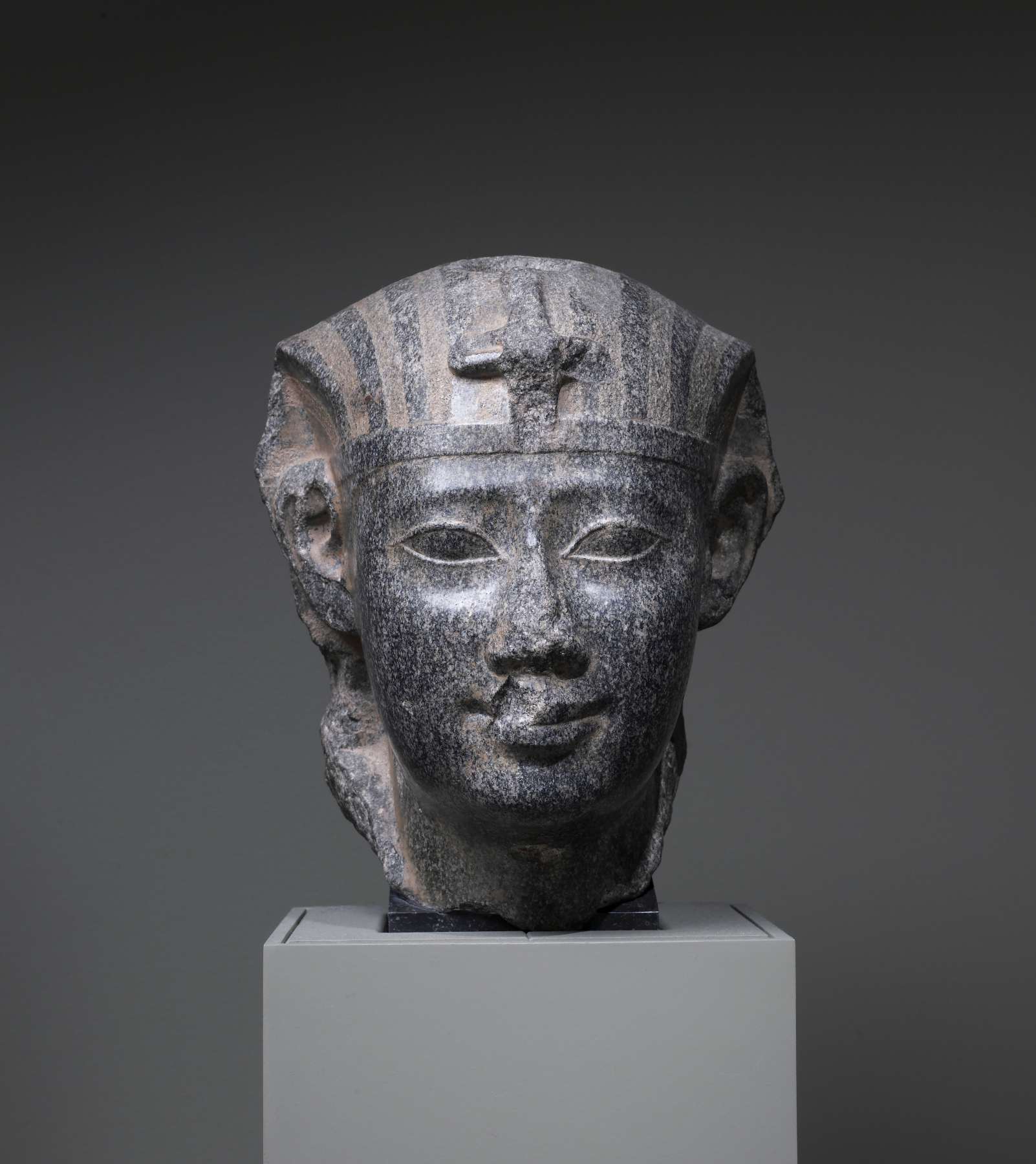Head of Ptolemy II
(Ancient Egypt and Nubia )
In 332 BCE, Alexander the Great freed Egypt from Persian control and made it part of his growing empire. One of his generals, Ptolemy Lagus, was sent to Egypt to serve as governor after Alexander's sudden death in 323 BCE. Ptolemy eventually crowned himself king and founded the Ptolemaic Dynasty. One of the early rulers of this Dynasty is represented in this elegant, life-size head. The Ptolemaic rulers were sensitive to the political needs of their diverse subjects. Therefore, royal portraiture is mainly of two types, one in strictly Egyptian style, like this head, and the other purely Greek.
Provenance
Provenance (from the French provenir, 'to come from/forth') is the chronology of the ownership, custody, or location of a historical object. Learn more about provenance at the Walters.
Dikran Kelekian, New York and Paris [date and mode of acquisition unknown]; Henry Walters, Baltimore, 1924, by purchase; Walters Art Museum, 1931, by bequest.
Exhibitions
| 2012 | Chefs-d'oeuvre des derniers pharaons. Musée Jacquemart-André, Paris. |
Conservation
| Date | Description | Narrative |
|---|---|---|
| 7/14/1967 | Treatment | cleaned |
| 10/20/1998 | Examination | survey |
| 9/23/1999 | Treatment | technical study; cleaned |
Geographies
Egypt, Delta (Place of Origin)
Measurements
H: 11 1/4 x W: 8 11/16 x D: 9 1/2 in. (28.5 x 22 x 24.2 cm);
H overall with mount: 18 x W: 9 1/8 x D: 10 in. (45.72 x 23.11 x 25.4 cm)
Credit Line
Acquired by Henry Walters, 1924
Location in Museum
Accession Number
In libraries, galleries, museums, and archives, an accession number is a unique identifier assigned to each object in the collection.
In libraries, galleries, museums, and archives, an accession number is a unique identifier assigned to each object in the collection.
22.109


